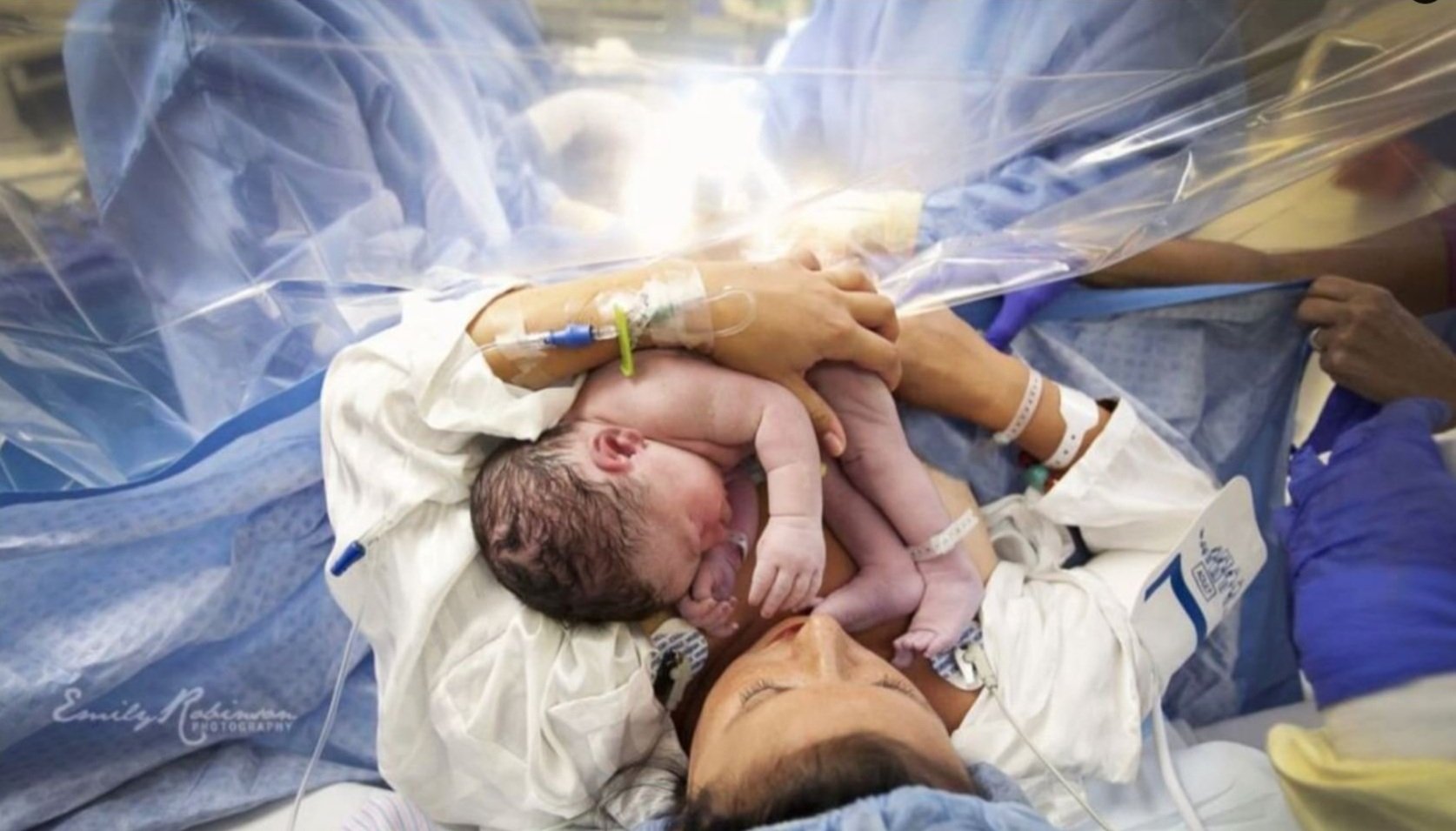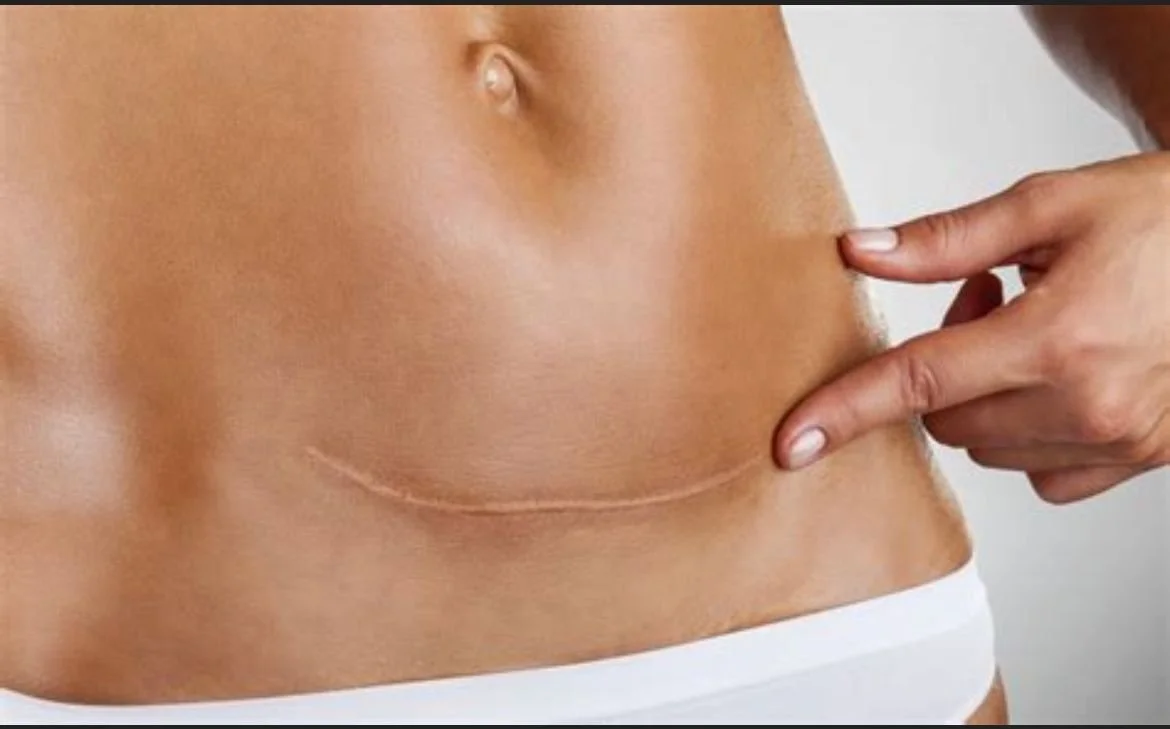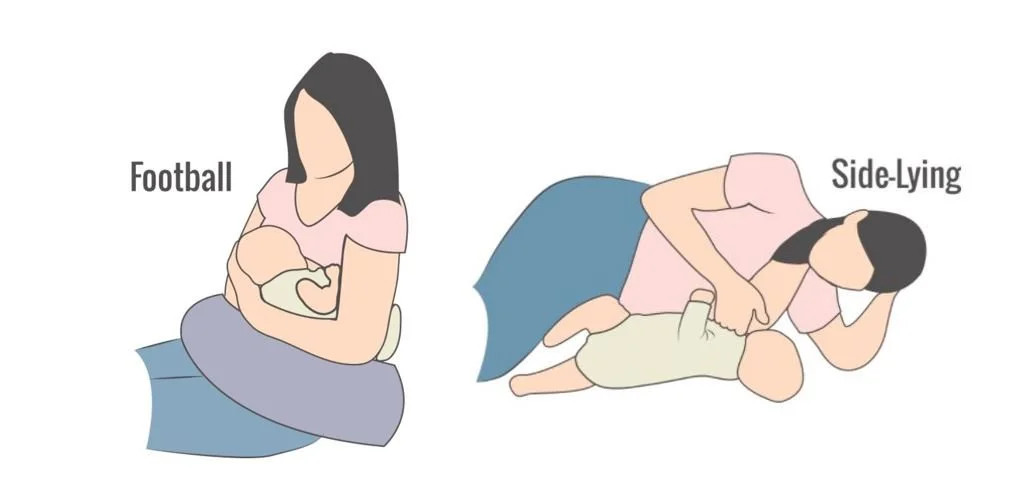C-Section – Belly Birth is a Birth.
As a mom, our ultimate goal is to make the arrival of our baby as safe as possible.
And if that means having a C-section - the resulting incision will forever represent the miracle of life.
April of this year was Caesarean Awareness month.
The goal was to:
· Raise awareness about C-section
· Promote Vaginal Birth After C-section
· Supports recovery following C-section
Caesarean section - is a surgical operation in which a baby /or babies are delivered through an incision through the front wall of the abdomen and womb.
Type of incision with C-section:
· Horizontal – represents 95% of C-sections
· Vertical – less common
* Note that internal incision on the uterus is always closed with dissolvable stitches, but the external incision on your skin may be closed in one of the 3 ways including staples, stitches or surgical glue.
What's a ‘Gentle/Natural C-section’?
Also called a ‘Family Centered C-section’, it is similar to a traditional C-section with a few differences to allow you and you partner to feel more a part of the birth.
A ‘Gentle/Natural C-section’ will include:
· A better view of your birth:
o you can ask to be propped up slightly so you can view the birth through the clear plastic drape or ask for the drape to be lowered earlier and further so you can see your baby being born
· A slower delivery
o your baby may be delivered more slowly to allow time for their chest to be squeezed on the way out as it would be in a vaginal birth
· Immediate skin to skin contact
· Less restrictive equipment
o IV line can be put into your non-dominant hand
o EKG leads may be placed on your back or lower chest instead of upper chest to allow the skin to skin early contact
· Opting for less sedation after the surgery
· Dimmer lights, reduced noise, and background music of your choice
Advantages of the Gentle/Natural C-section:
1. Feeling more connected to your birth
2. Improved bonding with your baby
3. Possibly greater satisfaction with the birth experience
4. Research has shown that immediate skin to skin contact helps regulate the baby's body temperature and heart rate and facilitates bonding and successful breastfeeding
5. Maternal mood enhancement
gentle c-section instead of a traditional c-section might help stave off postpartum depression stemming from a suboptimal birth experience
6. Immediate connection through breastfeeding
A C-section may be necessary when:
· a baby is in a feet first position (breech)
· lack of a normal labour progression
· premature labour
· viral infection
· placenta previa
· severe preeclampsia
· birth defects which make a vaginal birth impossible
· when women cannot labour for other health reasons (ie. mom has a serous heart condition)
· prior C-section when a vaginal birth is not indicated after
· problems with the umbilical cord (ie. prolapse cord)
· fetal distress - baby shows signs of a distress such as a slowing of their heart rate or decreased oxygen saturation
· multiple babies
At the present, C-section rates are approximately 31 % (for every three births, one was a C- section) compared to about 5% (or 1 in 20) in the 1960’s.
C-section recovery tips:
1. Ask for help
family/friend support is essential
give people concrete jobs so they can best support you
its important that you get rest after the surgery ,while you are healing and caring for a newborn
2. Manage you pain
your doctor may prescribe medications, but you can also use an ice pack to help with post-surgical inflammation
3. Post C-section belly band-binder
Caring for your C-section scar tips:
· avoid wearing low rise underwear or pants that may rub against your incision
· C-section scars are usually 4-6 inches long and 1/8 inch wide at first, then, usually, the scar becomes thinner and flatter and it will turn to the color of your skin or close to it with time
· after the scar is fully healed, your Pelvic Health Physiotherapist may instruct you on:
o scar massage and mobilisation techniques
o cupping techniques
o safe - individualized core strengthening exercises
o education about discussing silicone sheeting and/or silicone gels/creams to help with the scar tissue
When to contact your doctor after a C-Section:
· when you notice any warmth, redness ,swelling or oozing at the incision side
· worsening pain or sudden onset of abdominal pain
· any fever (even when your incision looks fine)
· foul smelling vaginal discharge
· incision splits open
· unusual pain over the incision or changes to the way the incision looks
· pain or burning when urinating, urine that's dark, scanty or bloody
· heavy bleeding at any time or bleeding with clots and cramping
o if you soak 2 pads an hour for 2 hours straight, your bleeding is considered heavy
· menstrual type bleeding past the first 4 days after delivery or bleeding that comes back after slowing
· pain in both breasts especially if accompanied by fever or flu like symptoms
· thoughts of hurting yourself or the baby, or if you feel incapable of carrying for your newborn
Breastfeeding positions that work well post C section:
· football hold
· side lying hold
Remember every birth is a miracle. Natural birth may be the way our bodies intended to bring babies into this world, but there are some situations in which that's just not possible. We are living in an amazing world in which medical teams can save both a mother and a child via caesarian section when necessary.
Health care providers and Pelvic Health Physiotherapists are here for you and your journey of preparing and recovering post C-section. At Resolution, our Pelvic Health Physiotherapists would be extremely honoured to answer your questions and address any concern you may have regarding C-section birth and recovery as well as getting your pre-pregnancy functionality back.
In health
Beata




